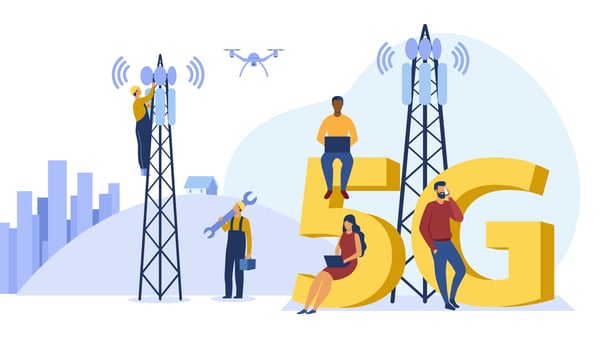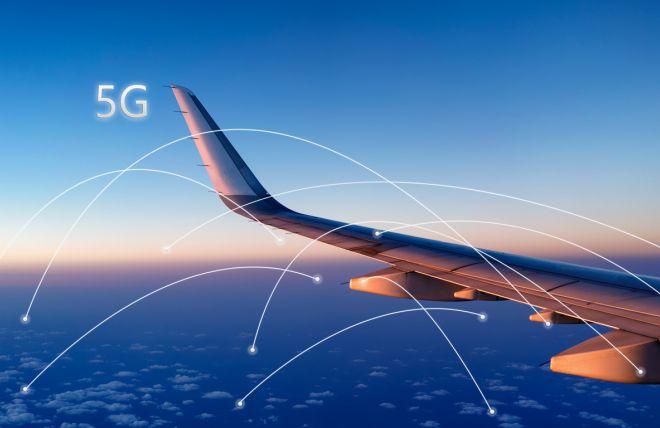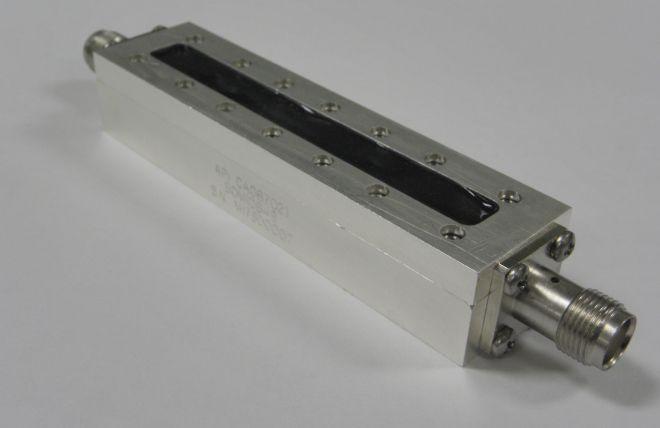Earlier this year there was a lot of discussion about the fears that 5G C-band signals could affect aircraft altimeters. The RF spectrum is becoming increasingly crowded, which means filters are even more critical in providing effective fences against crossover interference. RF filters are positioned to fuel the evolution of 5G technology as the industry provides effective solutions, such as how to deal with interference issue between the telecom 5G C-band and radio altimeters frequencies.
FAA called on aircraft operators to begin installing filters on aircraft equipped with a radio altimeter. The technical solution to such a problem is the installation or retrofitting of more-effective RF power-rejection filters on radar altimeter receivers for frequencies below 4200 GHz in short, safely join the rest of the world in realizing 5G and radar altimeters get along just fine, if done right.
Here are five key FAQs regarding 5G filters:
How important are RF filters for 5G?
Filters let desired frequencies in and keep undesired frequencies out of devices or systems. Their role in providing effective fences against crossover interference are critical as higher frequency and larger bandwidth technologies such as 5G take up more of the spectrum. Without filtering to isolate sections of the crowded RF spectrum from one another, the interference in 5G bands to the adjacent Wi-Fi spectrum would wreak havoc. Filters enable proper operation in all areas of communication, from mobile devices to smart cities to autonomous and electric vehicles.

Why is 5G a potential public safety issue?
Not only does high-band 5G occupy a big chunk of the airwaves, but other services such as Wi-Fi (5 GHz and 6 GHz), ultrawide band (6 GHz- 8 GHz), V2X vehicular networking (4.7 GHz- 4.9 GHz) as well as aviation altimetry are all located in the same multi-gigahertz range.
5G roll out in airports highlighted how 5G could cause potential problems with radar altimeters. Before 5G networks, the 3.7-3.98 GHz spectrum was used to communicate with low-powered satellites so sharing this spectrum space with radar altimeters in the 4.2-4.4 GHz was not an issue for airport operations. But radar altimeter design did not consider higher-power 5G acquiring nearby spectrum, so the RF front-end bandpass filters have been specified to roll off at 24 dB per octave below 4.2 GHz and above 4.4 GHz. That means altimeters in the field today have limited ability to reject fundamental emissions close to the 4.2-4.4 GHz band.
The radar altimeter is one of the most critical components to an aircraft’s operations; and the only sensor onboard an aircraft providing a direct measurement of the aircraft’s clearance over the terrain or other obstacles. This is critical information in many automated landing and collision avoidance systems. Undetected failure of this sensor can therefore lead to catastrophic results; and false alarms have the potential to undermine trust in the avionics systems.
What are some of the 5G Filter solutions?
Using a cavity bandpass filter, which can suppress the fundamental emissions with sharp selectivity outside the 4.2-4.4 GHz band, ensures safety margins are met for aircrafts flying within range of a radio access network broadcasting 5G C Band service.
Spectrum Control’s radar altimeter, 5G C- Band interference mitigation low-loss filter covers the 4.2- 4.4 GHz altimeter band, with high attenuation in the 3.7- 3.98 GHz 5G band. This cavity filter solution is designed to minimize insertion loss and group delay variation over 4.2- 4.4 GHz while providing 50 dB of rejection at 3.7 to 3.98 GHz. A cavity-based design is utilized for this application because of the inherent high Q/low loss of cavity filters and the need to keep the insertion loss as low as possible to insure no compromise in altimeter performance.
Spectrum Control has developed retrofit upgrades to deal with the spurious emissions from 5G commercial for Usage Category 1 (commercial air transport aircraft), usage Category 3 (transport and general aviation helicopters), aircraft that may be impacted by interference between the radar altimeter receiver and a 3.5 GHz upper band 5G signal (C-Band) emitted from a base station collocated near an airport.
What is 5G beamforming?
One significant feature of 5G is an enhancement technique called “beamforming,” where wireless RF energy from a cellular base station is focused on a particular direction for a period in order to provide faster or more reliable data service to a mobile device.
Beamforming effectively acts as a signal multiplier and could increase the signal power, and potentially increase the interference with the lower radar altimeter signals at greater elevations above ground level.

What is the FAA doing to handle this issue?
The FAA and industry leaders have identified a series of steps to protect commercial air travel from disruption by 5G C-band interference, while also enabling Verizon and AT&T to enhance service around certain airports. The phased approach requires operators of regional aircraft with radio altimeters most susceptible to interference to retrofit them with radio frequency filters by the end of 2022. At the same time, the FAA worked with the wireless companies to identify airports around which their service can be enhanced with the least risk of disrupting flight schedules.
About the Author
John Yania has over three decades of experience in filter design for the harsh space environment. Co-founder and VP of FSY Microwave. Educated MSEE, Johns Hopkins University. Product Line Manager expert, responsible for design of Filter Products, RF/Microwave & Microelectronics technologies


